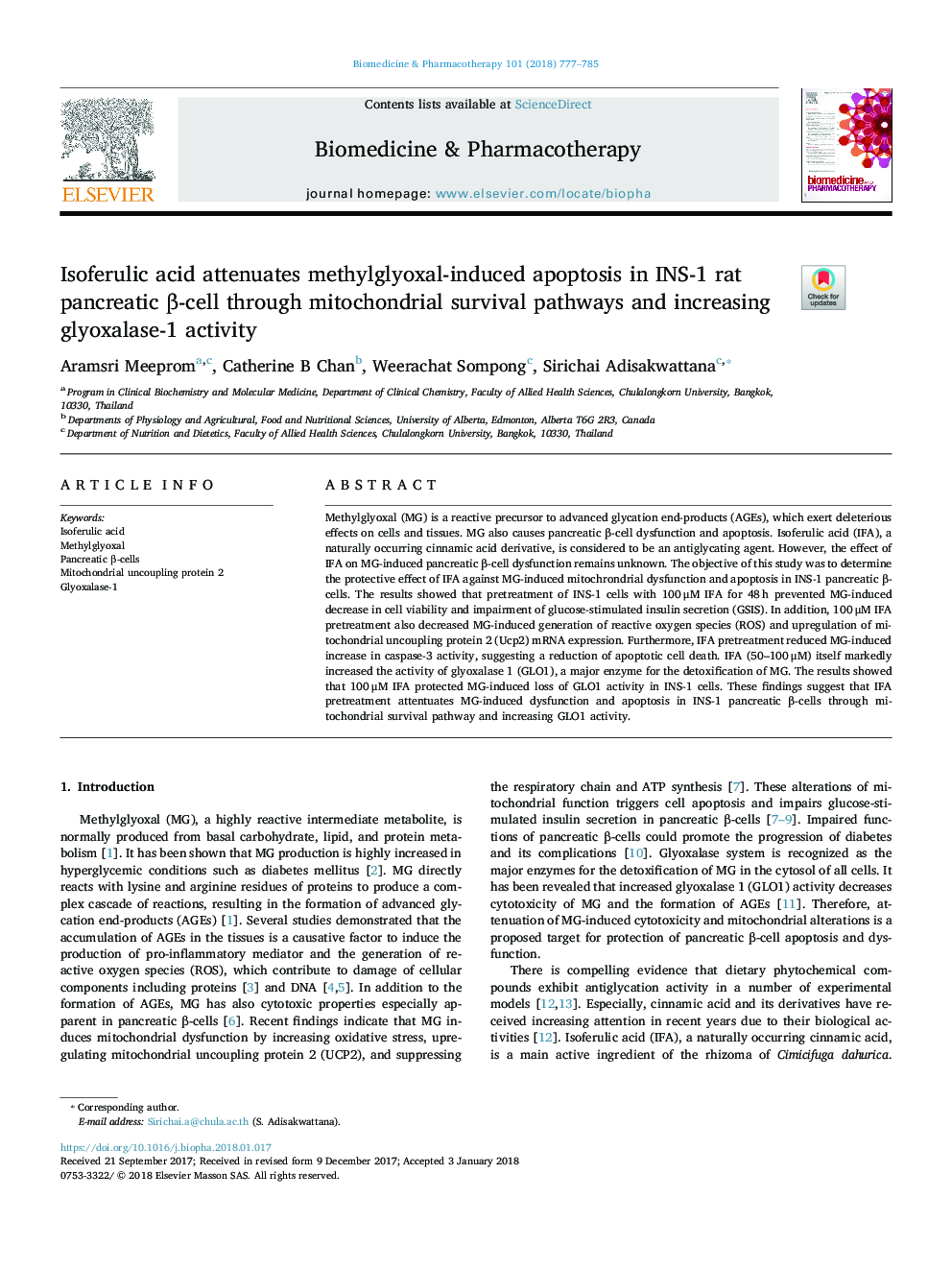| Article ID | Journal | Published Year | Pages | File Type |
|---|---|---|---|---|
| 8526117 | Biomedicine & Pharmacotherapy | 2018 | 9 Pages |
Abstract
Methylglyoxal (MG) is a reactive precursor to advanced glycation end-products (AGEs), which exert deleterious effects on cells and tissues. MG also causes pancreatic β-cell dysfunction and apoptosis. Isoferulic acid (IFA), a naturally occurring cinnamic acid derivative, is considered to be an antiglycating agent. However, the effect of IFA on MG-induced pancreatic β-cell dysfunction remains unknown. The objective of this study was to determine the protective effect of IFA against MG-induced mitochrondrial dysfunction and apoptosis in INS-1 pancreatic β-cells. The results showed that pretreatment of INS-1 cells with 100â¯Î¼M IFA for 48â¯h prevented MG-induced decrease in cell viability and impairment of glucose-stimulated insulin secretion (GSIS). In addition, 100â¯Î¼M IFA pretreatment also decreased MG-induced generation of reactive oxygen species (ROS) and upregulation of mitochondrial uncoupling protein 2 (Ucp2) mRNA expression. Furthermore, IFA pretreatment reduced MG-induced increase in caspase-3 activity, suggesting a reduction of apoptotic cell death. IFA (50-100â¯Î¼M) itself markedly increased the activity of glyoxalase 1 (GLO1), a major enzyme for the detoxification of MG. The results showed that 100â¯Î¼M IFA protected MG-induced loss of GLO1 activity in INS-1 cells. These findings suggest that IFA pretreatment attentuates MG-induced dysfunction and apoptosis in INS-1 pancreatic β-cells through mitochondrial survival pathway and increasing GLO1 activity.
Keywords
Related Topics
Health Sciences
Medicine and Dentistry
Oncology
Authors
Aramsri Meeprom, Catherine B Chan, Weerachat Sompong, Sirichai Adisakwattana,
